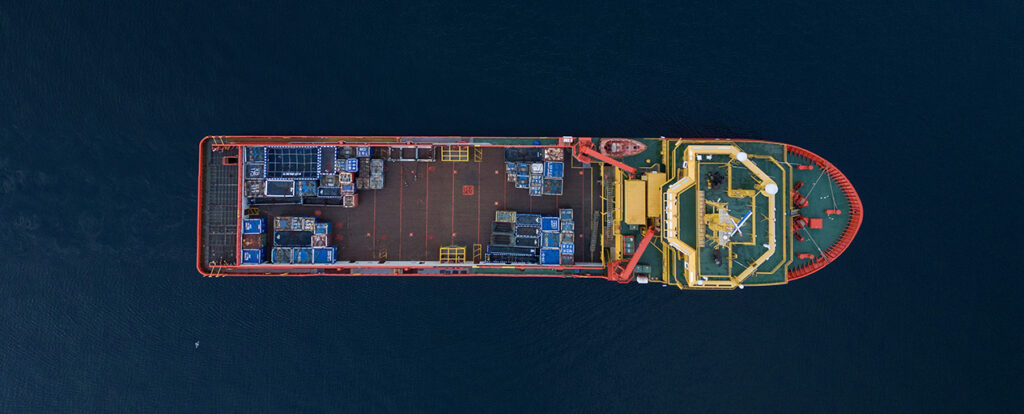With €5 million in EU support, the Apollo project will see a dual-fuel engine able to operate on ammonia installed in Viking Energy. The project placed a purchase order for the Wärtsilä 25 engine and complete fuel gas supply system in July.
The platform supply vessel is owned and operated by Eidesvik Offshore, and the Norwegian shipowner will demonstrate the technology in an operational environment on contract for Equinor.
The partners will prepare different modular designs and concepts, allowing the quick adoption of ammonia engines as an alternative for both existing and new ships. The concept will include safety and monitoring systems and fuel gas supply systems. Ship design services will be delivered from Breeze Ship Design, and the complete ammonia solution from the engine, fuel gas supply system and service agreement are provided by Wärtsilä.
The Apollo project, which has received funding through the EU’s Horizon Europe programme, is run by a consortium of eight European companies and institutions. National Centre for Scientific Research Demokritos is responsible for assessing safety criteria, while partners VTT and Belgian contractor and shipowner DEME will simulate other vessel types and operating scenarios to illustrate the ability to transfer the technology to other segments of the shipping industry.
Viking Energy is also a demonstrator vessel in the EU-funded ShipFC project, which aims to pilot ammonia-powered fuel cells.

Consortium members:
Eidesvik Offshore ASA (Norway) owns and operates a worldwide fleet of purpose-built vessels that provide services to the offshore supply, subsea, and offshore wind markets. The company is a pioneer in implementing new environmental technologies in both new builds and its existing fleet.
Equinor (Norway) Equinor is the leading operator on the Norwegian continental shelf and is present in around 30 countries worldwide. Their portfolio of projects encompasses oil and gas, renewables, and low-carbon solutions, and they aim to become a net-zero energy company by 2050.
Wärtsilä (Finland) is a global leader in innovative technologies and complete lifecycle solutions for the marine and energy markets. Within the marine industry, Wärtsilä emphasizes maximizing the environmental and economic performance of vessels driving the industry forward on its journey towards decarbonisation.
Maritime CleanTech (Norway) is a world-leading network for developing clean maritime solutions. Together with its partners, it pioneers groundbreaking technologies and solutions that are key to accelerating the transition towards emission-free maritime industries.
Breeze Ship Design (Norway) is an independent ship design company that offers innovative designs that focus on environmental compliance with known and future rules and regulations.
VTT Technical Research Centre of Finland is the leading research and technology company in the Nordic countries.
Deme Group NV (Belgium) is a marine sustainable solutions provider that operates a fleet of over 100 specialized vessels. The Company offers dredging, land reclamation, marine infrastructure, offshore energy, and environmental remediation and serves clients worldwide.
National Centre of Scientific Research “Demokritos” (Greece) is Greece’s largest multidisciplinary research center, focusing on basic and applied research in Nanotechnology and Advanced Materials, Energy and environment, Biosciences, Nuclear and Particle Physics, and Informatics and telecommunications.
Funding:
EU: The Horizon Europe framework programme aims to accelerate the transition towards a climate-neutral Europe by 2050 by funding projects that contribute to research and innovative solutions in various sectors related to climate, energy, and mobility.

